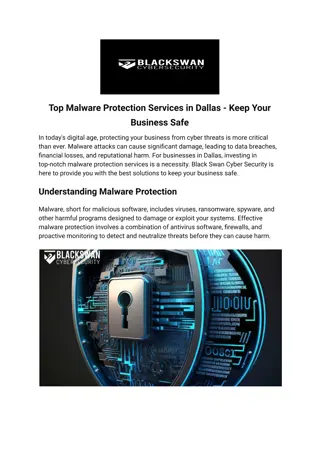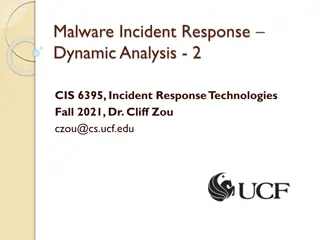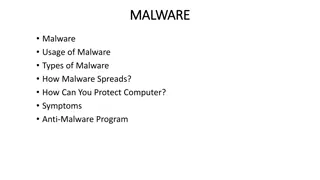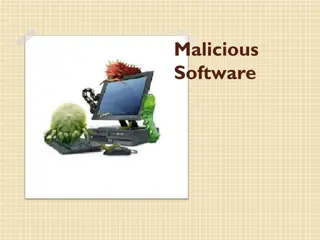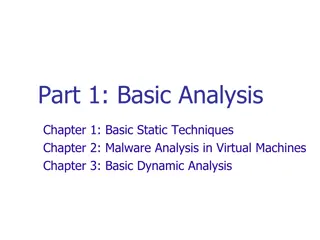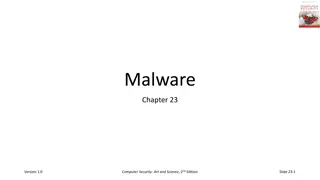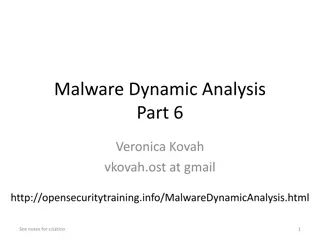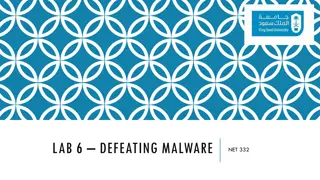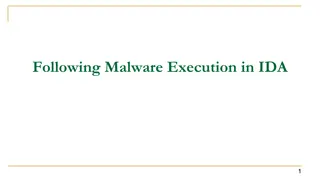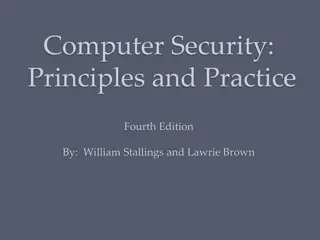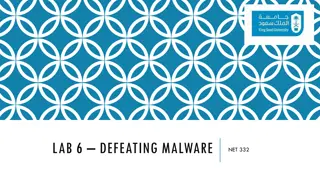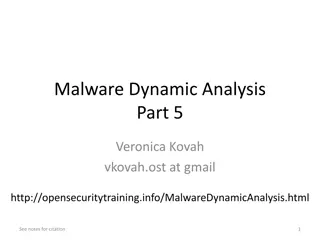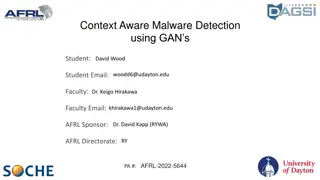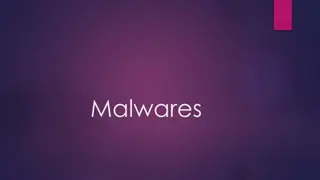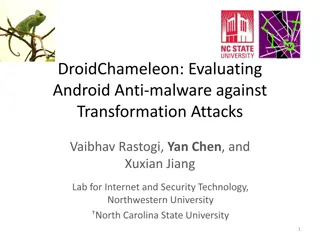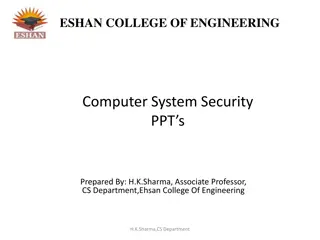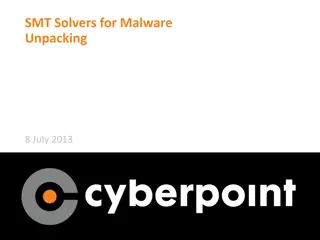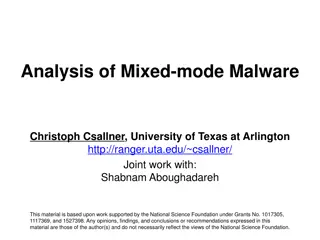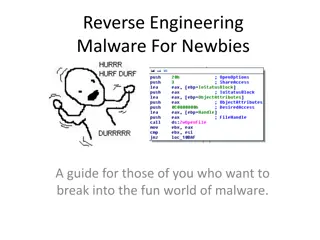Malware: Types, Risks, and Prevention
Dive into the world of malware to explore major types such as viruses, worms, ransomware, and more. Learn about social engineering tactics, insider threats, and best practices to safeguard against malware attacks. Discover the malicious intent behind grayware and how to prevent malware infections effectively.
Download Presentation

Please find below an Image/Link to download the presentation.
The content on the website is provided AS IS for your information and personal use only. It may not be sold, licensed, or shared on other websites without obtaining consent from the author.If you encounter any issues during the download, it is possible that the publisher has removed the file from their server.
You are allowed to download the files provided on this website for personal or commercial use, subject to the condition that they are used lawfully. All files are the property of their respective owners.
The content on the website is provided AS IS for your information and personal use only. It may not be sold, licensed, or shared on other websites without obtaining consent from the author.
E N D
Presentation Transcript
IT 6823 LM 7 Malware Dr. Lei Li
NIST Framework Core Image source: https://www.nist.gov/document/cybersecurityframeworkv1- 1presentationpptx IT 6823 LM7 Malware 2
Learning Outcomes Describe major types of malware Explain the characters of computer virus and ransomware Describe how social engineering work Explain the role of firewall in protecting the computer system Describe different type of inside threats and hacker Discuss the best practices against malware attacks & inside threats IT 6823 LM7 Malware 3
Overview Malware Malicious intent Grayware Actors in malware attacks Social engineering Insiders, hacker Prevent malware attacks IT 6823 LM7 Malware 4
Malware Any malicious program or code that is harmful to systems Virus Worms Spyware/adware Trojan Ransomware Rootkit A Keylogger Malicious cryptomining Exploits IT 6823 LM7 Malware 5
Malware Image source: https://en.wikipedia.org/wiki/Malware#Security_defects_in_software IT 6823 LM7 Malware 6
Malware Infection Growth Rate Source: https://purplesec.us/resources/cyber-security-statistics IT 6823 LM7 Malware 7
Computer Virus Requires a host program Requires user action to transmit from one system to another Attaches bits of its own malicious code to other files or replaces files outright with copies of itself Don t catch headline as in the past, but still need to take it seriously. IT 6823 LM7 Malware 8
Ransomware Scareware Screen lockers Encrypting ransomware IT 6823 LM7 Malware 9
Grayware Privacy-invasive software Convey the commercial aspect of unwanted software contamination Potentially unwanted program Unwanted despite having been downloaded by the user Adware & spyware IT 6823 LM7 Malware 10
Social Engineering Hack people s mind 98% of cyber attacks rely on social engineering Getting victim to: Give up usernames and passwords Install malware on their device Send money via electronic fund transfer, money order, or gift cards Authorize a malicious software plugin, extension, or third-party app Act as a money mule IT 6823 LM7 Malware 11
Human Vulnerabilities for Social Engineering Reciprocity Scarcity Authority Consistency Liking Consensus Image source: https://purplesec.us/social-engineering/ IT 6823 LM7 Malware 12
Types of Social Engineering Email phishing Trojan Spearing fishing SMS text message phishing (smithing) Scam calls Tech support scams IT 6823 LM7 Malware 13
An Example Cybercriminals impersonate World Health Organization to distribute fake coronavirus e-book IT 6823 LM7 Malware 14
Inside Treats Malicious insider A mole Careless users Most common threat IT 6823 LM7 Malware 15
Insider Threat Behavior Image source: https://www.imperva.com/learn/application-security/insider-threats/ IT 6823 LM7 Malware 16
Hacker Purpose of hacking Criminal financial gain Fame and reputation Corporate espionage State-sponsored hacking Hacktivist IT 6823 LM7 Malware 17
Types of Hacker Black hat Whit hat Gray hat IT 6823 LM7 Malware 18
Factors make a system more vulnerable to malware Security defects in software Insecure design or user error Over-privileged users and code Use of the same operating system IT 6823 LM7 Malware 19
Firewall Restrict outside access to your computer/network Block traffic from certain location, applications or ports Allowing relevant and necessary data through Hardware firewall Network firewalls Software firewall Built in most OS Third party app IT 6823 LM7 Malware 20
Best Practices against Malware Attacks Continuous User Education Use Reputable A/V Software Ensure Your Network is Secure Perform Regular Website Security Audits Scanning your organization s websites regularly for vulnerabilities Create Regular, Verified Backups IT 6823 LM7 Malware 21
Protect Against an Insider Attack Protect critical assets Enforce policies Increase visibility Promote culture changes IT 6823 LM7 Malware 22
Insider Threat Detection Solutions Insider familiar with security measures Combine several tools Machine learning tools for analyzing data stream and prioritizing alerts Behavior analytics Database activity monitoring IT 6823 LM7 Malware 23



